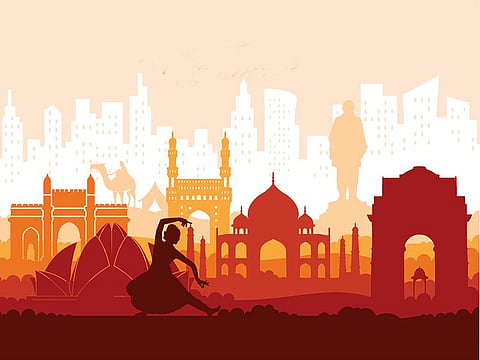India’s strength lies in its diversity of languages
The country of one billion plus has several languages but no single 'national' language

Should Hindi be the medium of instruction in India’s central educational institutions?
This latest question, apparently suggested by a parliament committee headed by Home minister Amit shah, is at the heart of a fierce row between the centre and southern states like Tamil Nadu and Kerala, who believe that the Bharatiya Janata Party (BJP) is out to impose Hindi on non Hindi speaking states.
The acrimonious debate over the imposition of Hindi is not new. It is rooted in our history going back to pre independence times.
It was the subject of much discussion during meetings of the Constituent Assembly of India in 1949 and here too opinion was divided over whether or not it should be a “official” language or a “national” language.
According to the 2011 linguistic census, there are 121 mother tongues, including 22 languages listed in the 8th Schedule of the Indian Constitution
There were those who wanted Hindi to replace English right away while others felt English should stay as the official language till an “all India language” is evolved.
Significantly, T A Ramalingam Chettiar, who represented Coimbatore in the Assembly, said the language issue “probably means life and death for the South” and that Hindi was just as foreign to the South as English was.
Prime Minister Jawaharlal Nehru cautioned against imposing Hindi on those who did not wish to use it, saying no language should be forced down on anyone.
The Constituent Assembly came to a compromise where English along with Hindi was made the official language of India for 15 years. After that, Hindi would replace English as the only language to be used for official purposes.
But when the 15 year period ended, there were massive protests that broke out in Tamil Nadu and other parts of the south. It forced the Centre to pass the Official Languages Act, which stated that English would continue to be upheld as the official language along with Hindi.
Incidentally India has no national language.
These fault lines are being triggered yet again with this latest row. Reports say that a parliament committee on languages headed by Amit Shah, has made around 100 recommendations, including that Hindi should be the medium of instruction in IITs, IIMs, and central universities in the Hindi-speaking states. This report has not officially been made public since it is submitted to the President.
“One nation, one language”
Subsequently, some MPs of the 30 member committee told The Indian Express that the reports about its contents were “misleading”. But the Home Minister has made no secret of his push for Hindi, stoking the same debate earlier this year when he called for people from different states to communicate with each other in Hindi and not English. In 2019, he spoke about “one nation, one language”.
The fact is, this is an unnecessary debate. India’s unique strength lies in being a diverse country of several languages.
According to the 2011 linguistic census, there are 121 mother tongues, including 22 languages listed in the 8th Schedule of the Constitution. It is true that Hindi is widely spoken — among 43.6% of the population — but imposing brute will is not the answer.
Tamil Nadu Chief Minister MK Stalin on Sunday wrote to Prime Minister Narendra Modi against the alleged recommendation of the parliamentary committee to make Hindi the medium of instruction in central educational institutions.
He said India stands as a shining example for multicultural and multilinguistic democracy in the world because of the inclusive and harmonious policies being followed so far.
“But, I am afraid, the continued efforts to promoting Hindi in the name of ‘one nation’ will destroy the feeling of the brotherhood of people of different languages and cultures and is detrimental to the integrity of India,” he wrote.
Indeed India’s unity lies in its diversity.
Sign up for the Daily Briefing
Get the latest news and updates straight to your inbox




